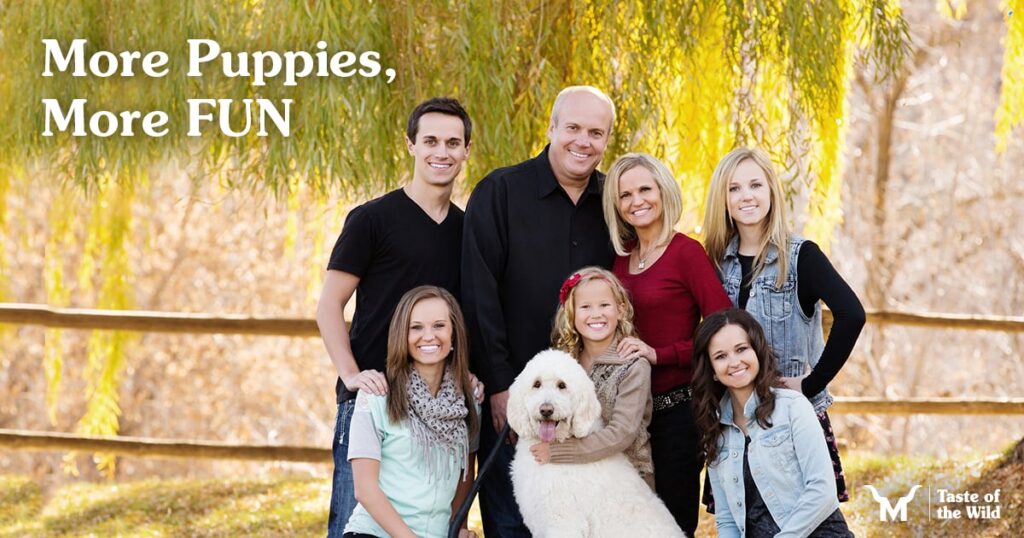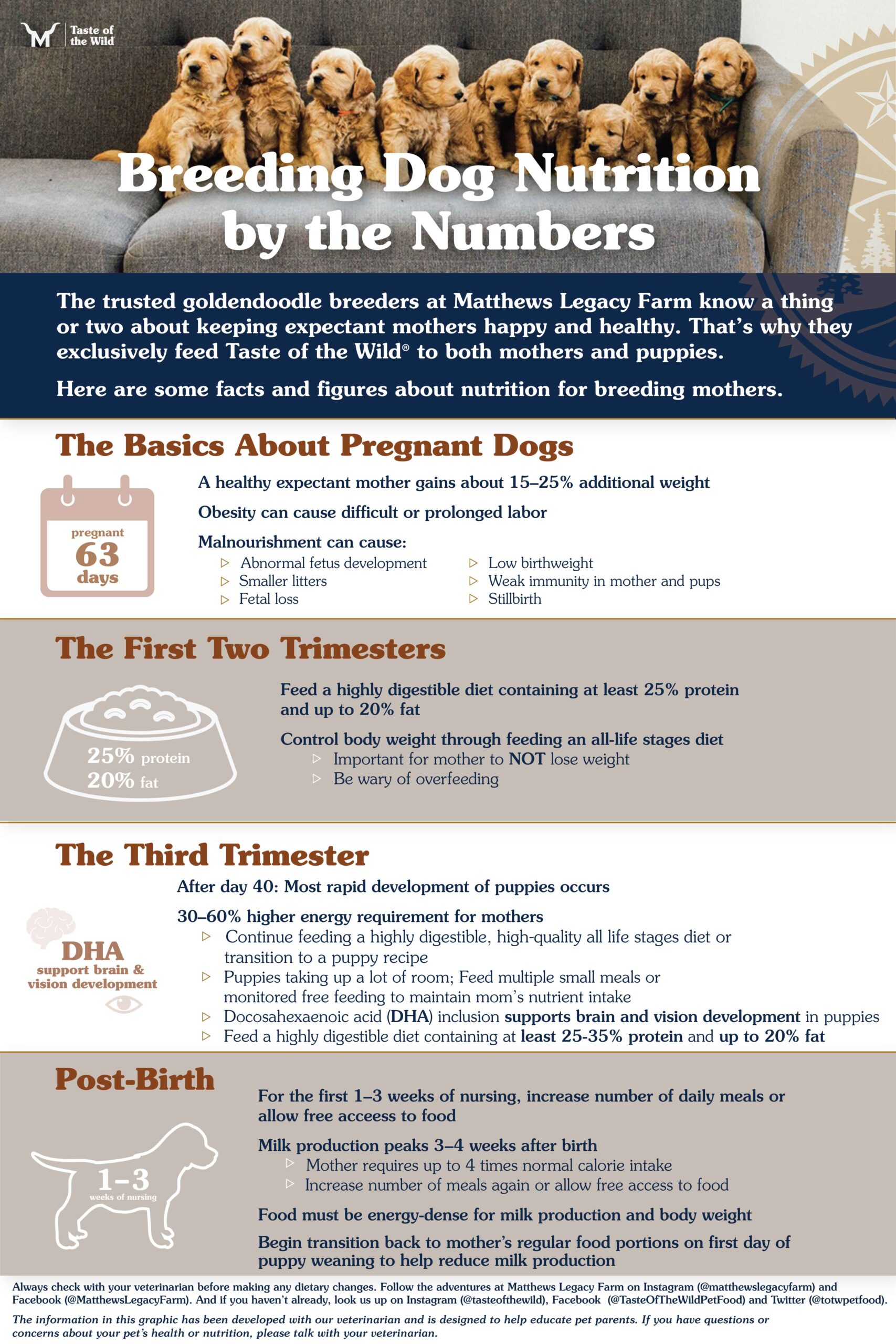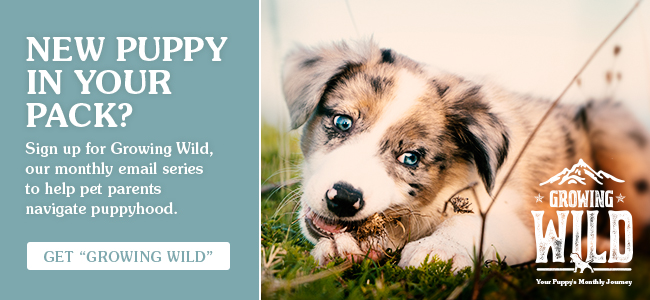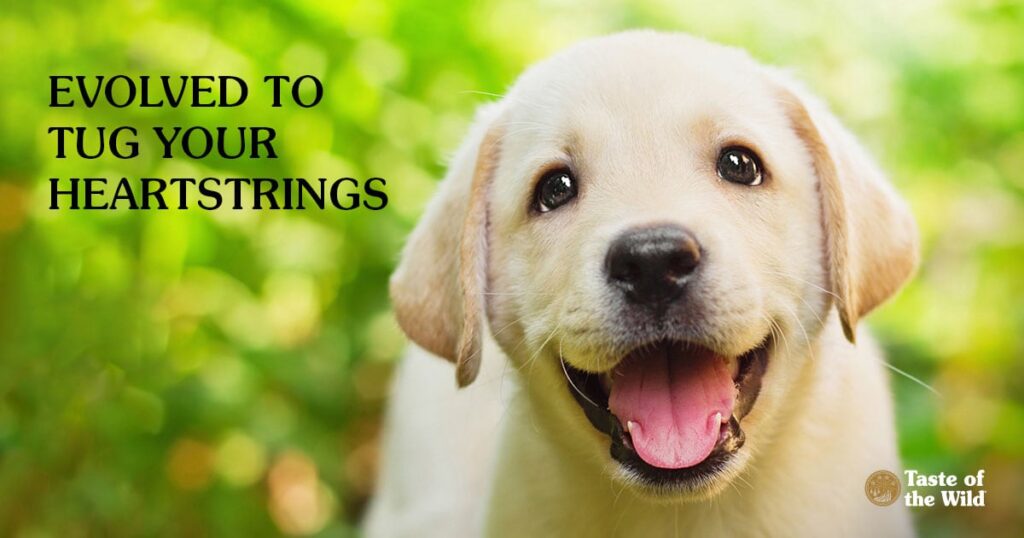
The Matthews family knows a thing or two about pet nutrition.
When your family motto is “Work hard, play hard,” and part of that work and a lot of that play involves multiple litters of goldendoodles at a time, you need to make sure that everyone — especially those on four legs — is happy and healthy. You need nutrition you can rely on and trust.
The Matthews have been breeding goldendoodles for several years, and they’ve relied upon Taste of the Wild since day one. McKinley Mantell and her sister, Tori Matthews, got a pet goldendoodle, Dixie, 12 years ago — way before goldendoodles were a wildly popular breed. Dixie gave McKinley and Tori a passion for the breed, and that passion became a dream to give other families the opportunity to love a doodle just as much as they loved theirs.
The sisters spent hours researching the best way to breed and raise goldendoodles. “We wanted to raise happy healthy puppies to be service dogs, emotional support dogs, and life-long companions.” Tori says. “We started with two female golden retrievers, Sadie and Rue, and fell in love with their happy personalities and even temperaments,” McKinley says. “We knew they’d be perfect mothers.” And so the Matthews Legacy Farm breeding program began.
When the sisters started the program, McKinley and her husband, Matt, had been feeding Taste of the Wild to their own goldendoodle, Bear. “We’d been looking for a brand with a clean nutrition panel,” Matt remembers. “So we tried Taste of the Wild, and we quickly noticed Bear’s thick, shiny coat. And she just seemed healthier.”
“If we were noticing how great it was working first hand for our own dog, then we knew it would be great for our program,” McKinley says.
A Caring Environment
Matthews Legacy Farm is an animal haven. The 15-acre plot where the farm sits is home to cows, horses, chickens, sheep, goats, pigs, and cats. “We have a little bit of everything,” McKinley says. “But they’re all pets. Every one of them.”
But let’s not forget the dogs. While Bear, Sadie and Rue are the constant canine companions, there have been up to 20 goldendoodle puppies goofing around the farm at one time. “Both dogs had litters, and one was huge. 11 puppies! That was fun,” McKinley remembers.
In addition to their own personal dogs, the Matthews created a “guardian program,” meaning that they place potential mothers in pre-screened homes. “This way, the mother has an amazing quality of life and a great family to create many lasting memories,” Matt says. Part of the screening process for a potential home is that the mother and any subsequent puppies be fed high-quality food. “We recommend Taste of the Wild.”
Wild at Home, Wherever Home Might Be
The Matthews have placed doodle puppies all over the United States (with their first international placements to Canada and Mexico coming this fall). No matter where the puppies make their new homes — from New York to Oregon to California to Washington, D.C.— one thing stays consistent: Every new pet family is sent home with a “Matthews Legacy Farm Puppy Package” that includes a toy, teething bone, shampoo, training treats, a bandana, poop bags and pee pads, puppy folder with records, birth certificate and training guide, all in a sturdy Matthews Legacy Farm canvas bag. And they also get two sample bags of Taste of the Wild Pacific Stream Puppy Recipe with Smoke-Flavored Salmon.
“There are a few reasons for this,” McKinley says. “With puppies going to a new home and leaving mom and siblings for the first time, having the same food helps them adapt to new family and strange living space more easily.” But it’s not just the puppies who are adapting to change; the new puppy parents are as well. “So taking the guesswork out of the puppies’ nutrition for the owners brings them comfort and helps them get started on the right foot.”
Another reason the Matthews prefer to send the puppies home with Taste of the Wild is a little more practical. “We love the distribution,” Matt says. “Whether they’re going to Vegas or New York, we’re confident that if the new owners want to stick with Taste of the Wild, it will be available to them. Whether it’s at the local store or online, we like knowing that it’s there.”
But another reason is because the puppies love the Pacific Stream Puppy recipe. “We start feeding puppies at 5 weeks,” Tori says. “We soak the food with warm water and they just jump right in, like it’s a natural-born instinct. We’ve never had to force-feed a puppy. They love the flavors. They just crave it.”
The new owners seem to recognize how much the pups love Taste of the Wild. The Matthews stay in touch with every family who has adopted their puppies, and whenever nutrition comes up, it usually turns out that they stuck with Taste of the Wild. “Every time we hear from owners and they say they’re still on Taste of the Wild, we consider it a success,” Matt says. “It tells me that we’re doing it right.”
As for the Matthews’ adult dogs, there isn’t a Taste of the Wild recipe that they don’t like. The pregnant mothers get switched to puppy recipes to get extra nutrients into mom and her milk while the other dogs have yet to turn down an adult recipe. “We try to mix it up for them from time to time,” Matt says. “And they just down it no matter what.”
More Puppies, More Fun on the Horizon
There is a lot of puppy action happening at Matthews Legacy Farm. With two litters due in July and two more by October, it’ll be worth your while to follow the family and all the puppies on Instagram and Facebook. And if you haven’t already, look us up on Instagram, Facebook and X.







